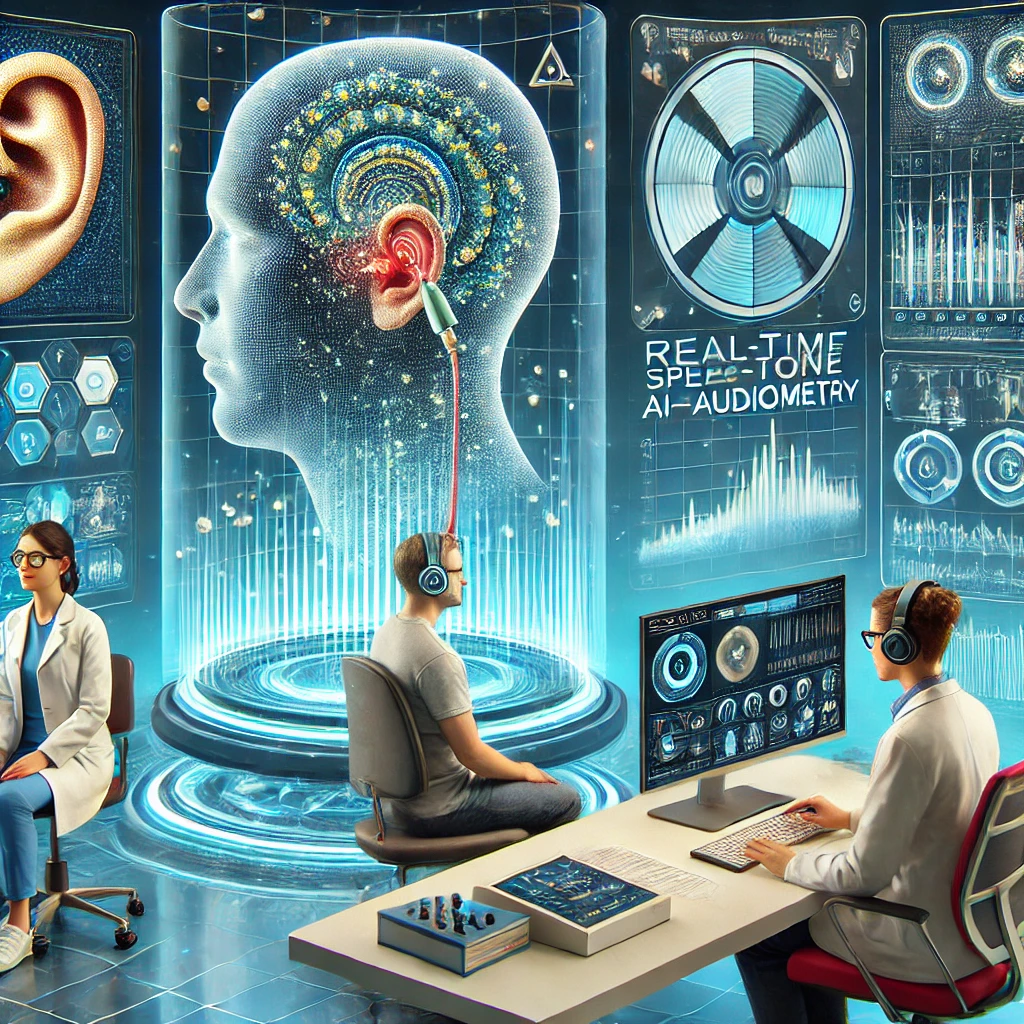AI in audiology: A new era for speech audiometry and hearing care
Speech audiometry is a critical diagnostic tool in audiology, evaluating a patient’s ability to understand spoken language. It is used to determine hearing aid requirements and cochlear implant candidacy. However, administering SA tests is complex - it requires specialized equipment, trained professionals, and a controlled testing environment, making it difficult to scale in busy clinical settings.

Hearing loss significantly affects communication, making accurate audiometry testing essential for diagnosis and treatment. Traditional speech audiometry (SA) assessments, which measure a patient's ability to recognize and comprehend speech, are time-consuming and resource-intensive, limiting accessibility in clinical practice. However, a new study, "Development and Comparison of Machine Learning and Deep Learning Models for Speech Audiometry Prediction," published in Applied Sciences (2025), explores how AI can automate and improve speech audiometry testing.
The research, conducted by a team from Soonchunhyang University, South Korea, compares machine learning (ML) and deep learning (DL) models to predict speech audiometry results using pure-tone audiometry (PTA) data. The study finds that ML techniques, particularly gradient boosting and XGBoost, outperform deep learning models in classifying speech audiometry outcomes. These findings suggest that AI-driven models could reduce the need for extensive speech audiometry testing, making hearing assessments more efficient and accessible for patients worldwide.
How AI is revolutionizing hearing assessments
Speech audiometry is a critical diagnostic tool in audiology, evaluating a patient’s ability to understand spoken language. It is used to determine hearing aid requirements and cochlear implant candidacy. However, administering SA tests is complex - it requires specialized equipment, trained professionals, and a controlled testing environment, making it difficult to scale in busy clinical settings.
The study proposes using machine learning models trained on PTA data to predict speech audiometry results. Pure-tone audiometry (PTA) is a simpler, widely used hearing test that measures the softest sounds a person can hear at different frequencies. If AI models can reliably predict speech audiometry results using PTA data, clinicians could potentially reduce reliance on SA testing, streamlining the diagnostic process.
The researchers developed four AI models for predicting SA results based on PTA data:
- Multilayer Perceptron (MLP) – A deep learning model designed to learn complex relationships in hearing data.
- Recurrent Neural Network (RNN) – A model that captures sequential dependencies, often used for time-series data.
- Gradient Boosting (GBM) – A powerful machine learning model that builds strong predictions by combining multiple weak models.
- XGBoost – An optimized version of gradient boosting, known for high accuracy and efficiency in structured data analysis.
Each model was evaluated using accuracy, F1 score, log loss, and confusion matrix analysis. The results showed that machine learning models outperformed deep learning models, with gradient boosting achieving the highest accuracy at 86.22%.
Why machine learning outperforms deep learning in audiometry
The study found that machine learning models performed better than deep learning models for speech audiometry prediction. Why? Unlike deep learning, which thrives on large, complex datasets, PTA data is relatively structured and lacks strong sequential patterns. This makes machine learning a better fit for analyzing PTA data, as it can identify subtle patterns without requiring massive amounts of labeled data.
Key findings:
- Gradient boosting achieved the highest accuracy (86.22%), outperforming deep learning models.
- XGBoost provided a more balanced classification performance, minimizing false positives and false negatives.
- Multilayer perceptron (MLP) and recurrent neural network (RNN) models underperformed due to the low temporal dependency in PTA data.
- All models struggled to predict borderline hearing levels (Class 2) due to overlapping data distributions.
These results suggest that deep learning is not always the best choice for medical data analysis. In structured datasets like PTA records, machine learning techniques - especially tree-based models - offer better accuracy and efficiency.
Future of AI in Audiology: What Comes Next?
The study highlights that AI models have the potential to transform hearing assessments, making them faster, more cost-effective, and scalable. However, before AI-powered audiometry becomes mainstream, several challenges need to be addressed. These include:
Enhancing AI model accuracy and reliability
Although gradient boosting achieved 86.22% accuracy, further improvements are necessary to reduce classification errors, particularly for borderline hearing levels. Future research should focus on feature engineering, hyperparameter tuning, and ensemble approaches to improve prediction accuracy.
Expanding AI training data
AI models perform best when trained on large, diverse datasets. To enhance generalizability, researchers should incorporate multi-center data from different demographics and hearing profiles, ensuring the models work across various populations.
Integrating AI with clinical audiometry tools
To make AI practical in audiology clinics, predictive models must be integrated into hearing assessment software. AI-powered audiology tools could assist clinicians in making faster, more data-driven decisions, especially in settings where speech audiometry testing is unavailable.
Addressing ethical and regulatory concerns
As AI plays a greater role in medical diagnostics, ensuring ethical AI deployment is crucial. Regulations must safeguard patient data, prevent bias in AI models, and validate AI-based diagnoses against traditional clinical assessments.
- FIRST PUBLISHED IN:
- Devdiscourse










